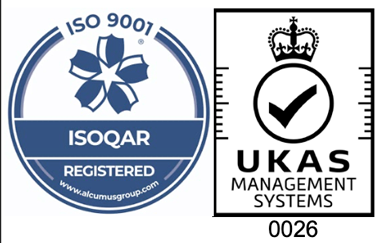The Synthetic Rubber Production Process
10th September, 2020
Synthetic rubber is any man-made elastomer. They’re polymers made from petroleum byproducts. Synthetic rubber, like natural rubber, has several applications in the automobile sector, including tyres, door and window profiles. As well as seals such as O-rings and gaskets, hoses, belts, matting, and flooring.
Although natural rubber is both a renewable resource and a hugely versatile material, there are some needs it cannot meet. Natural rubber melts at around 180°C, meaning it can’t be used in applications where temperatures may exceed that limit. Additionally, it’s too brittle for use in applications where it would need to be flexible or malleable without losing structural integrity.
Rubber’s core structure is something that scientists have been trying to emulate for years. This has resulted in a broad range of types of rubber. Namely, high-quality synthetic rubbers manufactured specifically to meet the needs of particular industries and sectors.
Synthetic Rubber Sustainability
Synthetic rubber differs from natural rubber in that it doesn’t occur naturally, even though it shares many of its defining characteristics with processed latex.
The synthetic rubber industry as a whole is part of a global effort to make rubber production more sustainable overall, as the base compounds in synthetic rubber are predominantly polymers synthesised from petroleum byproducts.
Aquaseal Rubber Ltd is always looking for ways to further increase our sustainability levels by reducing the amount of non-renewable resources used in our production process.
What is the synthetic rubber production process?
The synthetic rubber production process follows several important steps, each of which may change slightly depending on the chosen types of rubber. The steps below loosely outline the general steps involved in processing and manufacturing a typical synthetic rubber.
- A hydrocarbon mixture (from oil or coal) is created and refined.
- Naphtha; a flammable liquid hydrocarbon mixture used to manufacture gasoline and plastics; is combined with natural gases. This reaction produces monomers, which bind molecules together to create polymers. Common monomers used to make synthetic rubbers include Styrene-Butadiene Rubber (SBR), Nitrile Rubber (NBR) and Butyl Rubber (IIR).
- Chemical agents are used to turn the individual polymers into polymer chains. This forms a rubber substance.
- In a process called vulcanisation, the rubber substance will be processed into a rubber product. Vulcanisation works by converting polymers into more durable material by adding accelerators such as sulphur.
- The rubber is then moulded into the desired shape, before it undergoes quality assurance checks.
Types of synthetic rubber
Even though synthetic rubber is man-made, it is just as reliable as its natural counterpart. At Aquaseal Rubber, we process and manufacture a number of different synthetic rubbers, each for different purposes.
- Neoprene
Neoprene rubbers are based on polychloroprene; a polymer composed of chloroprene, acetylene, and hydrochloric acid. Aquaseal formulate high quality neoprene by modifying the chemical structure of polychloroprene and adding additional elements to ensure the end product features a broad range of chemical properties. - Ethylene Propylene Diene Monomer (EPDM)
EPDM rubber is based on ethylene and propylene. Aquaseal add a small amount of diene to these compounds so we can cure the rubber with sulphur. This changes their chemical structure to that of an unsaturated polymer, resulting in EPDM. - Styrene Butadiene Rubber (SBR)
SBR is a polymeride which we create using styrene and butadiene. Those compounds are derived from petroleum at an oil refinery, before we combine the two with a ratio of 25/75 for styrene/butadiene. - Butyl Rubber
Butyl rubber is a copolymer created using isobutylene and isoprene – isobutylene is a compound made of methyl and propylene, and isoprene makes the rubber unsaturated and capable of vulcanisation. - Fluoroelastomers
Fluoroelastomers are a family of copolymers originally composed of hexafluoropropylene and vinylidene. Aquaseal modify the consistency of our fluoroelastomers depending on the needs of our client – we can offer premium, long-lasting reliability even in some of the harshest environments. - Silicone
Silicone rubber is an inorganic polymer comprising of silicone and oxygen, which Aquaseal can modify by adding various chemicals to improve performance. Adding fluorine to silicone rubber compounds will make it solvent-resistant; phenyl will improve low temperature flexibility and resists gamma radiation; and vinyl makes vulcanisation more effective. - Buna N Rubber
Buna N rubber (also known as standard Nitrile rubber) is a synthetic rubber compound comprising acrylonitrile and butadiene – two copolymers. Because acrylonitrile is a volatile organic liquid, when it mixes with butadiene (a synthetic chemical compound) a reaction occurs, producing Buna N rubber.
Get in touch
If you’re looking for a rubber company where product quality and customer service comes first, feel free to call 0191 266 0934 or drop an email to enquiries@aquasealrubber.co.uk.


